#wwii naval shps
Text
USS LST-325
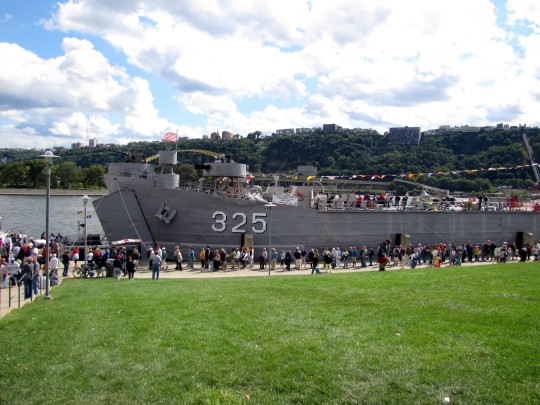
LST-325 was one of more than 1,000 Landing Ship, Tank vessels built by the US during WWII, which were designed to carry men, machines and cargo onto the beach. While the first 30 were built at Norfolk and Philadelphia naval yards, the bulk of the LSTs were built at several “cornfield shipyards” along the Ohio and Mississippi rivers, which were considered safe from Axis attack as well as having the needed capacity to build the LSTs while the more traditional yards built carriers, battleships and other fighting ships. There were two yards in Pittsburgh, PA, Dravo Corporation on Neville Island was the lead yard, and produced 145 ships, The American Bridge Company, several miles up the Ohio River in Ambridge, PA, completed 119. The Missouri Valley Bridge & Iron Co. in Evansville, ID built the most of the ‘cornfield’ yards, 171 ships. Finally, Chicago Bridge and Iron fabricated 156 LSTs in Seneca, IL. After completion, the ships sailed down the Ohio and Mississippi rivers to New Orleans, where final fitting out was done before they were sent off into the Atlantic and Pacific. The ships were not named, and were instead referred to by their hull number. LSTs were not designed for speed, with their twin GM 900hp diesel engines propelling the ship to a maximum of 12 knots (during launch, the ships reached a maximum of 18 knots travelling down the ramps). Crews referred to the ships as “Large, Slow Targets”, but the vessels served with distinction in all theaters of the war, including the mass landing in Normandy on D-Day.
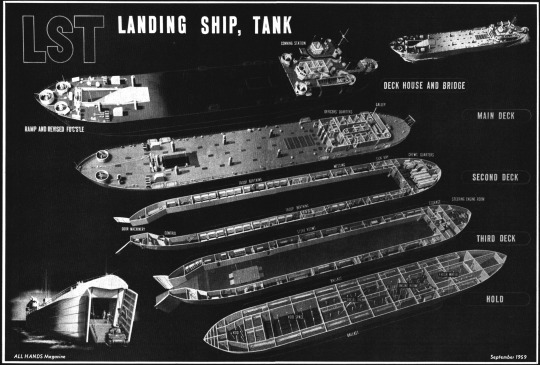
LST 325 was launched from the Philadelphia Naval Yards on 27 October 1942, and was commissioned on 1 February of the following year. The ship’s first actions were in the North African theatre, participating in landings at Gela, Sicily and Salerno, before joining the armada for the Normandy landing, specifically Omaha Beach. Over the following nine months, LST-325 made more than 40 trips across the English channel, bringing in men and supplies and evacuating wounded. The vessel returned to the US in May 1945, before being decommissioned on 2 July 1946, after which it was placed in the Atlantic Reserve fleet. In 1951 it was transferred to the Military Sea Transportation Service (predecessor of today’s Military Sealift Command) and took part in Operation SUNAC (Support of North Atlantic Construction) as USNS T-LST-325 operating in the Labrador Sea, Davis Strait, and Baffin Bay to assist in the building of radar outposts along the eastern shore of Canada and western Greenland. Decommissioned again in 1961, T-LST-325 was sent to Greece in 1964 as part of a grant-in-aid program, serving in the Hellenic Navy as the RHS Syros, L-144, from 1964 until 1999. In 2000, the ship was acquired by The USS LST Memorial, Inc, and sailed back to the US for restoration to serve as a memorial to the men that built and sailed the LSTs. In 2003, after completing refit in Mobile Bay, the ship sailed up the Mississippi River to Evansville for a ten-day stop, during which more than 35,000 people toured LST-325. In 2005 she sailed up the US East Coast for 60 days, visiting several ports including Alexandria, VA and Buzzard’s Bay, MA, before returning to Evansville, her new home port. In addition to serving as a memorial in Evansville, LST-325 travels up and down the rivers each year, visiting other cities to remind people of the contributions of the inland shipyards, as well as to memorialize those that built the LSTs. In 2010, LST-325 made it all the way up to Pittsburgh, giving me a chance to see her.

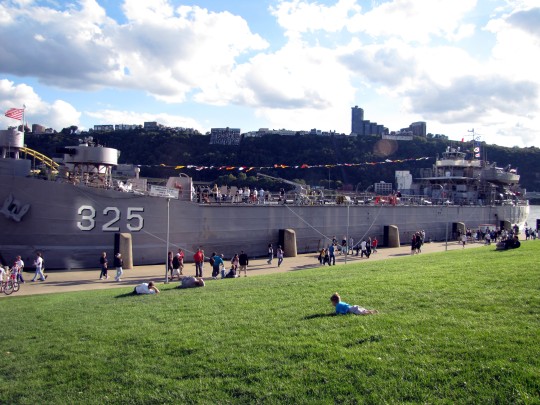
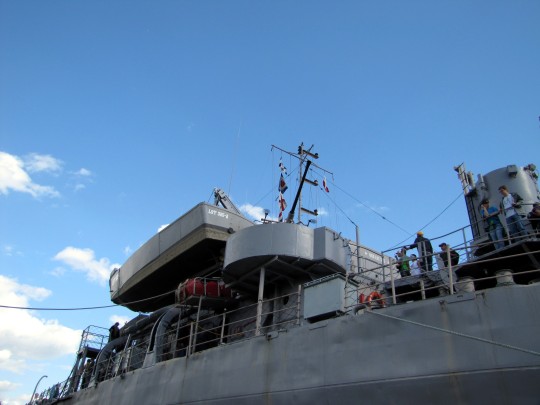


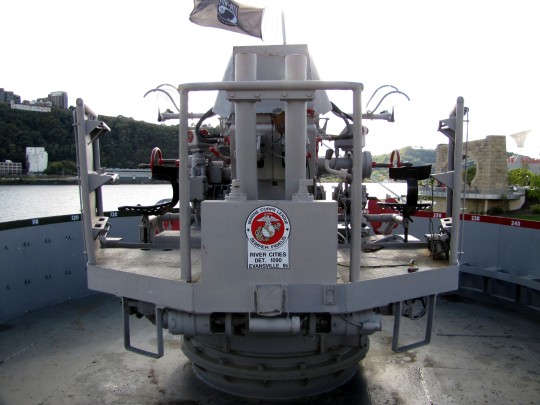
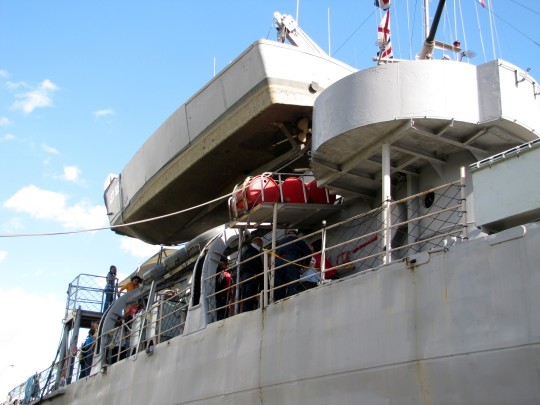



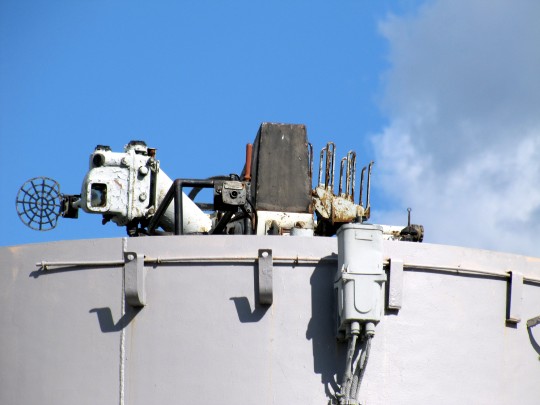

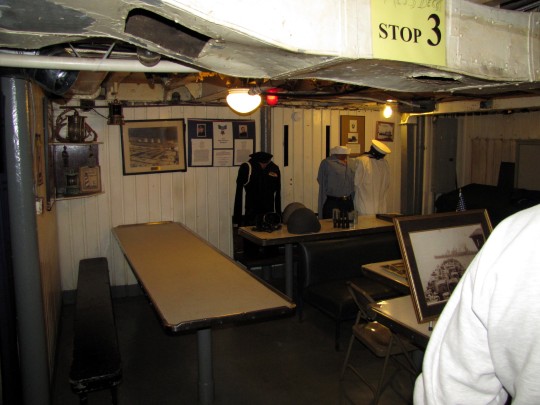
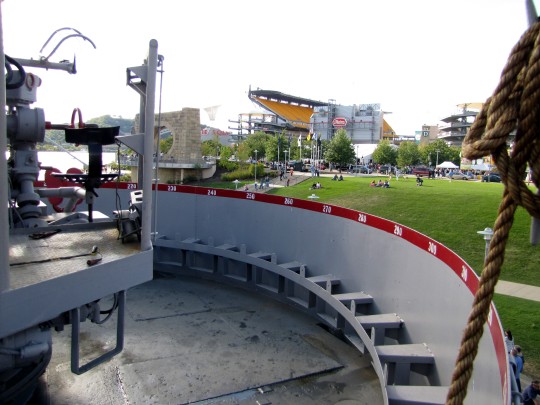
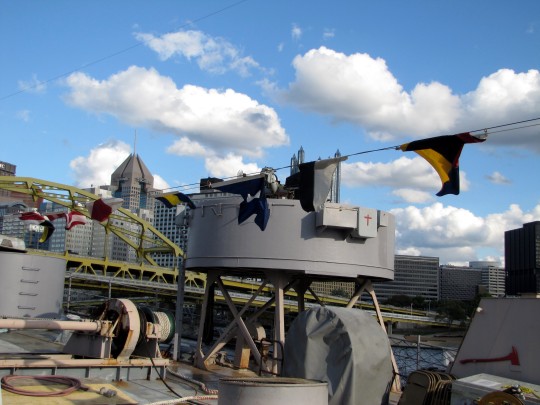
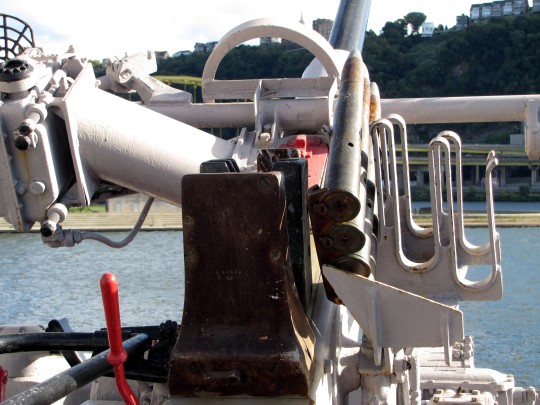
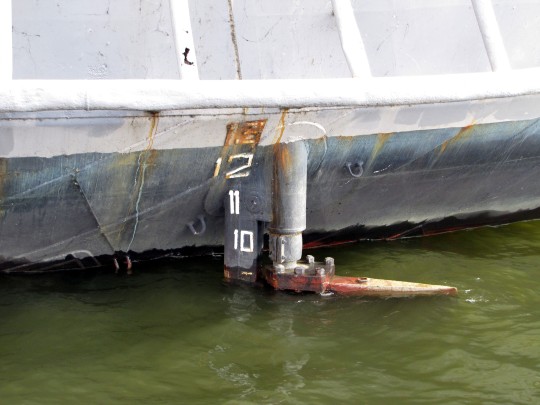
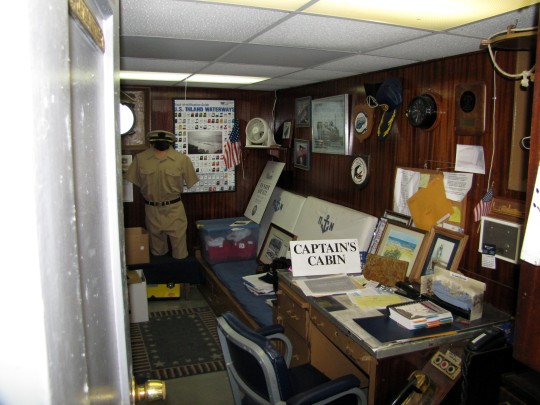
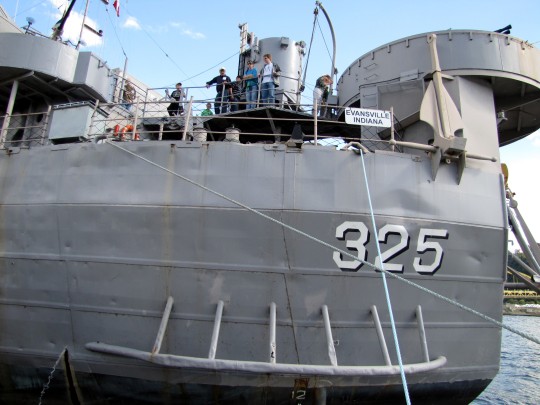


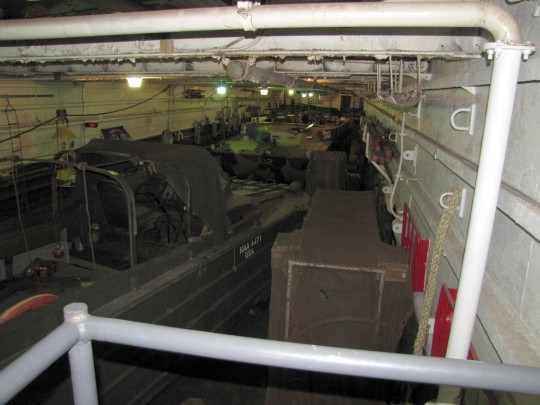
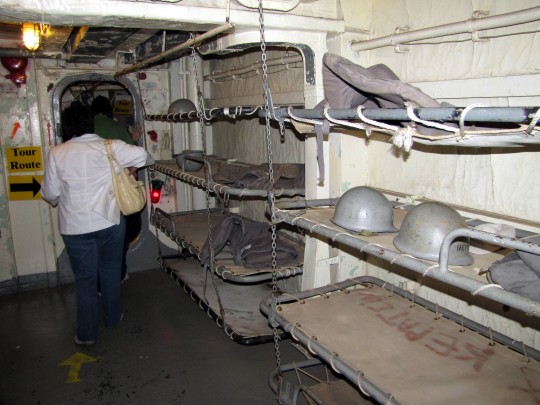

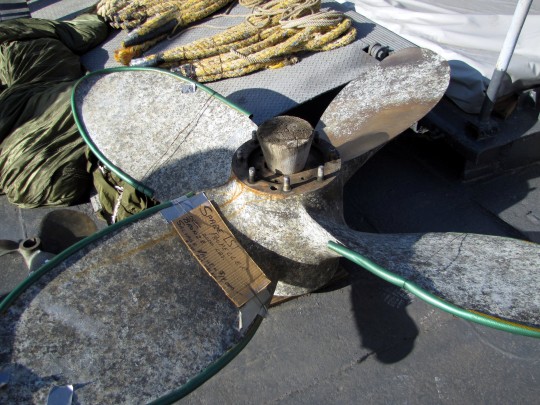

#lst325#lst 325#wwii#ww2#wwii history#wwii naval shps#navy shps#landing ships#Pittsburgh#evansville#pennsylvania#indiana#illinois#philadelphia#us navy#normandy
8 notes
·
View notes
Text
USS San Diego (CL-53), Light Cruiser, WWII by photolibrarian
From Wikipedia, the free encyclopedia
History
Name:San Diego
Namesake:City of San Diego, California
Builder:Bethlehem Shipbuilding Corporation’s Fore River Shipyard, Quincy, Massachusetts
Laid down:27 March 1940
Launched:26 July 1941
Sponsored by:Grace Legler Benbough
Commissioned:10 January 1942
Decommissioned:4 November 1946
Reclassified:CLAA-53, 18 March 1949
Struck:1 March 1959
Identification:
Hull symbol:CL-53
Hull symbol:CLAA-53
Code letters:NCDF
ICS November.svgICS Charlie.svgICS Delta.svgICS Foxtrot.svg
Honors and
awards:Silver-service-star-3d.pngSilver-service-star-3d.pngSilver-service-star-3d.png 18 × battle stars
Fate:Sold for scrapping, December 1960
General characteristics (as built)[1][2]
Class and type:Atlanta-class light cruiser
Displacement:
6,718 long tons (6,826 t) (standard)
8,340 long tons (8,470 t) (max)
Length:541 ft 6 in (165.05 m) oa
Beam:53 ft (16 m)
Draft:
20 ft 6 in (6.25 m) (mean)
26 ft 6 in (8.08 m) (max)
Installed power:
4 × Steam boilers
75,000 shp (56,000 kW)
Propulsion:
2 × geared turbines
2 × screws
Speed:32.5 kn (37.4 mph; 60.2 km/h)
Complement:796 officers and enlisted
Armament:
16 × 5 in (127 mm)/38 caliber Mark 12 guns (8×2)
16 × 1.1 in (28 mm)/75 anti-aircraft guns (4×4)
8 × single 20 mm (0.79 in) Oerlikon anti-aircraft cannons
8 × 21 in (533 mm) torpedo tubes
6 × depth charge projectors
2 × depth charge tracks
Armor:
Belt: 1.1–3 3⁄4 in (28–95 mm)
Deck: 1 1⁄4 in (32 mm)
Turrets: 1 1⁄4 in (32 mm)
Conning Tower: 2 1⁄2 in (64 mm)
General characteristics (1945)[1][2]
Armament:
16 × 5 in (127 mm)/38 caliber Mark 12 guns (8×2)
4 × quad 40 mm (1.6 in) Bofors anti-aircraft guns
13 × 20 mm (0.79 in) Oerlikon anti-aircraft cannons
8 × 21 in (533 mm) torpedo tubes
6 × depth charge projectors
2 × depth charge tracks
Service record
Part of:Fast Carrier Task Force
Operations:
Solomon Islands campaign
Gilbert and Marshall Islands campaign
Mariana and Palau Islands campaign
Volcano and Ryukyu Islands campaign
Awards:18 battle stars
The second USS San Diego (CL-53) was an Atlanta-class light cruiser of the United States Navy, commissioned just after the US entry into World War II, and active throughout the Pacific theater. Armed with 16 5 in (127 mm)/38 cal DP anti-aircraft guns and 16 Bofors 40 mm AA guns, the Atlanta-class cruisers had one of the heaviest anti-aircraft broadsides of any warship of World War II.
San Diego was one of the most decorated US ships of World War II, being awarded 18 battle stars, and was the first major Allied warship to enter Tokyo Bay[3] after the surrender of Japan. Decommissioned in 1946, the ship was sold for scrapping in December 1960.
Construction
Launching of USS San Diego, 26 July 1941
San Diego was laid down on 27 March 1940 by Bethlehem Steel in Quincy, Massachusetts, sponsored by Grace Legler Benbough (wife of Percy J. Benbough, then-mayor of San Diego), launched on 26 July 1941, and acquired by the Navy and commissioned on 10 January 1942, Captain Benjamin F. Perry in command.[3]
Service history
1942–1943
After shakedown training in Chesapeake Bay, San Diego sailed via the Panama Canal to the west coast, arriving at her namesake city on 16 May 1942. Escorting Saratoga at best speed, San Diego barely missed the Battle of Midway. On 15 June, she began escort duty for Hornet in operations in the South Pacific. Early in August, she supported the first American offensive of the war, the invasion of the Solomons at Guadalcanal. With powerful air and naval forces, the Japanese fiercely contested the American thrust and inflicted heavy damage; San Diego witnessed the sinking of Wasp on 15 September and of Hornet on 26 October.[3]
San Diego gave antiaircraft protection for Enterprise as part of the decisive three-day Naval Battle of Guadalcanal from 12–15 November 1942. After several months of service in the dangerous waters surrounding the Solomon Islands, San Diego sailed via Espiritu Santo, New Hebrides, to Auckland New Zealand, for replenishment.[3]
At Noumea, New Caledonia, the light cruiser joined Saratoga, the only American carrier available in the South Pacific, and HMS Victorious in support of the invasion of Munda, New Georgia, and of Bougainville. On 5 November and 11 November 1943, she joined Saratoga and Princeton in highly successful raids against Rabaul. San Diego served as part of Operation Galvanic, the capture of Tarawa in the Gilbert Islands. She escorted Lexington, damaged by a torpedo, to Pearl Harbor for repairs on 9 December. San Diego continued on to San Francisco for installation of modern radar equipment, a Combat Information Center and 40 mm antiaircraft guns to replace her obsolete 1.1 in (27 mm) batteries.[3]
1944
She joined Vice Admiral Marc Mitscher’s Fast Carrier Task Force at Pearl Harbor in January 1944 and served as an important part of that mighty force for the remainder of the war. Her rapid-fire guns protected the carriers against aerial attack. San Diego participated in "Operation Flintlock", the capture of Majuro and Kwajalein, and "Catchpole", the invasion of Eniwetok, in the Marshall Islands from 31 January to 4 March. During this period, Task Force 58 (TF 58) delivered a devastating attack against Truk, the Japanese naval base known as the "Gibraltar of the Pacific."[3]
San Diego steamed back to San Francisco for more additions to her radar and then rejoined the carrier force at Majuro in time to join in raids against Wake and Marcus Islands in June. She was part of the carrier force covering the invasion of Saipan, participated in strikes against the Bonin Islands, and shared in the victory of the First Battle of the Philippine Sea on 19–20 June. After a brief replenishment stop at Eniwetok, San Diego and her carriers supported the invasion of Guam and Tinian, struck at Palau, and conducted the first carrier raids against the Philippines. On 6 and 8 August, she stood by as the carriers gave close air support to Marines landing on Peleliu, Palau Islands.[3]
On 21 September, the Task Force struck at the Manila Bay area. After replenishing at Saipan and Ulithi, she sailed with TF 38 in its first strike against Okinawa. From 12–15 October, the carriers pounded the airfields of Formosa while San Diego’s guns shot down two of the nine Japanese attackers in her sector and drove the others away; however, some enemy planes got through and damaged Houston and Canberra. San Diego helped escort the two crippled cruisers out of danger to Ulithi. After rejoining the fast carrier force, she successfully rode out the typhoon of 17–18 December, despite heavy rolling of the ship.[3]
1945
In January 1945, TF 38 entered the South China Sea for attacks against Formosa, Luzon, Indochina, and southern China. The force struck Okinawa before returning to Ulithi for replenishment.[3]
San Diego next participated in carrier operations against the home islands of Japan, the first since the Doolittle Raid of 1942. The carrier force finished the month of February with strikes against Iwo Jima.[3]
On 1 March, San Diego and other cruisers were detached from the carrier force to bombard Okino Daijo Island in support of the landings on Okinawa. After another visit to Ulithi, she joined in carrier strikes against Kyūshū, again shooting down or driving away enemy planes attacking the carriers. On the night of 27–28 March, San Diego participated in the shelling of Minami Daito Jima; on 11 April, and again on 16 April, her guns shot down two attackers. She helped furnish anti-aircraft protection for ships damaged by suicide attacks and escorted them to safety. After a stop at Ulithi, she continued as part of the carrier force supporting the invasion of Okinawa, until she entered an advanced base drydock at Guiuan, Samar Island, Philippines, for repairs and maintenance.[3]
San Diego arrives at Yokosuka Naval Base, 30 August 1945
She then served once more with the carrier force operating off the coast of Japan from 10 July until hostilities ceased. On 27 August, San Diego was the first major Allied warship to enter Tokyo Bay since the beginning of the war, and she helped in the occupation of the Yokosuka Naval Base and the surrender of the Japanese battleship Nagato. After having steamed over 300,000 mi (480,000 km) in the Pacific, she returned to San Francisco on 14 September 1945. San Diego gave further service as part of "Operation Magic Carpet" in bringing American troops home.[3]
Decommissioning and sale
San Diego was decommissioned and placed in the Pacific Reserve Fleet on 4 November 1946, berthed at Bremerton, Washington. She was redesignated CLAA-53 on 18 March 1949. 10 years later, she was struck from the Naval Vessel Register, on 1 March 1959.[3] Sold in December 1960 to Todd Shipyards, Seattle, WA.
Awards
USS San Diego (CL 53) memorial, April 2012.
USS San Diego (CL-53) received 18 Battle Stars[4][5] for service in World War II, placing her among the Most decorated US ships of World War II.
Following is a list of the campaigns participated in:[6]
Guadalcanal Capture
Buin-Faisi-Tonolai Raid
Santa Cruz Islands
Guadalcanal (Third Savo)
Rennel Island Jan.
New Georgia-Rendova-Vaugunu
Buka-Bonins Strike
Gilbert Islands Occupation
Kwajelein-Wotje
Truk Attack, February 16–17, 1944
Saipan-Pagan Attacks
Southern Palau Islands
Southern Palau Islands, Philippine Islands Assaults
Okinawa Attack
Formosa Attacks
China Coast Attacks
Iwo Jima, Feb. 15 To March 16, 1945
Okinawa Assault And Occupation March, 17 To June 11, 1945
Philippine Liberation
#reconditioning #batteries car battery, #battery, rechargeable aa batteries, rechargeable batteries, battery charger, car batteries, nimh battery, battery doctor, battery reconditioning, battery repair, battery desulfator
@BatteryReconditioningNew Home
http://bit.ly/2I9sVzc
The post USS San Diego (CL-53), Light Cruiser, WWII by photolibrarian appeared first on Battery Reconditioning.
from Battery Reconditioning http://batteryreconditioning.onlinestorewebpro.com/uss-san-diego-cl-53-light-cruiser-wwii-by-photolibrarian/?utm_source=rss&utm_medium=rss&utm_campaign=uss-san-diego-cl-53-light-cruiser-wwii-by-photolibrarian
0 notes